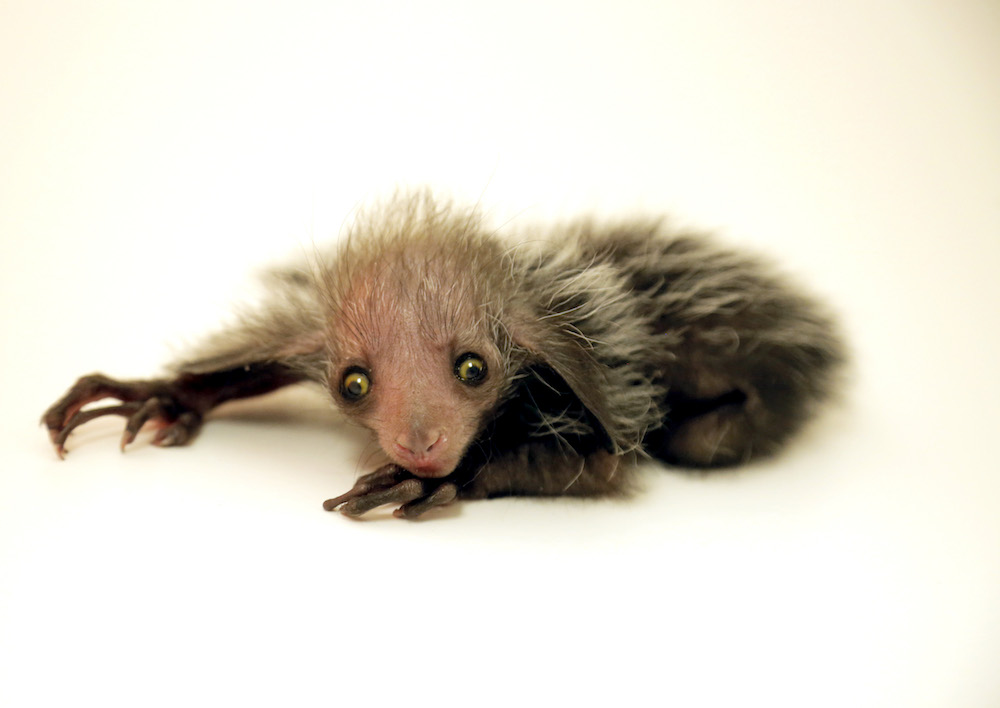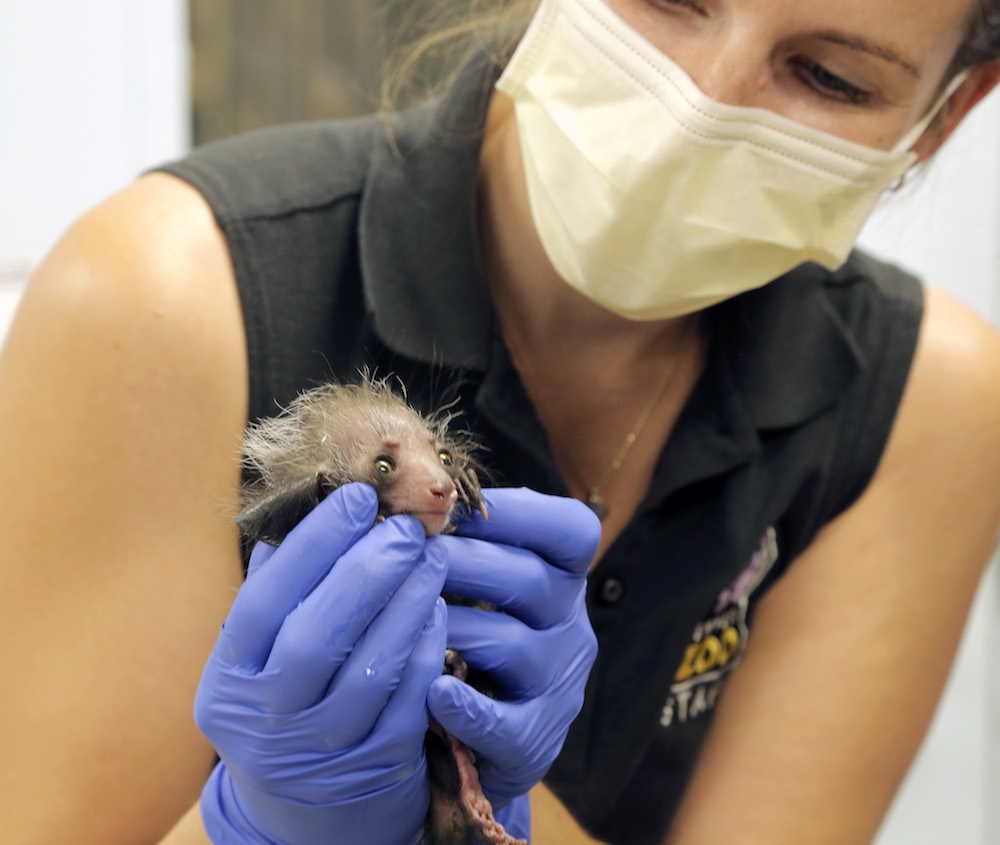Endangered Lemur Newborn Is So Ugly It's Cute

How weird can a newborn look and still, somehow, be cute? Tonks the baby aye-aye may answer that question.
Born at the Denver Zoo on Aug. 8, Tonks is one of only 24 of the nocturnal lemurs in captivity in the United States. She's a squirrel-size bundle of wiry fur, beady eyes and freakishly scraggly claws, and she's somehow still absolutely adorable. [Secrets of a Strange Lemur: An Aye-Aye Gallery]
Aye-ayes (Daubentonia madagascariensis) are native to Madagascar. No one knows precisely how many exist in the wild. The International Union for Conservation of Nature (IUCN) classifies the animals as endangered and estimates that more than half of their wild population has disappeared in the past three decades. Aye-ayes face threats from habitat loss and unsustainable hunting, according to the IUCN, and the animals will likely lose another half of their current population in the next two decades.
As adults, aye-ayes are about the size of possums. They use their spindly fingers to tap on the bark of trees, aiming to spook wood-boring insects inside the tree so that they'll move. When the aye-ayes hear the telltale scuttle of a potential meal, the predators chew holes into the bark and fish the insects out with their weirdly long middle fingers.
Tonks is named after the "Harry Potter" character Nymphadora Tonks, a fitting moniker given that the newborn's mother is called Bellatrix, after the "Harry Potter" villain Bellatrix Lestrange. The new aye-aye's father, another Denver Zoo resident, is named Smeagol, after the dark-loving "Lord of the Rings" character.
Bellatrix initially struggled to care for her newborn, according to Denver Zoo staff, and this prompted zoo veterinarians to step in and feed Tonks from a syringe.
"We provided 24-hour care for the first week and had to teach Bellatrix how to nurse, but now she is nursing well and Tonks has gained a lot of weight," lead primate keeper Becky Sturges said in a statement. "Now, we're just monitoring them to make sure things continue to go well."
Sign up for the Live Science daily newsletter now
Get the world’s most fascinating discoveries delivered straight to your inbox.

In the wild, aye-ayes start breeding at around 3 to 4 years of age, giving birth to singleton babies every two or three years, according to the IUCN. Newborn aye-ayes are tiny and helpless, weighing just a few ounces, according to the Denver Zoo. They nurse for around seven months but stay with their mothers for up to two years, huddling in ball-like nests tucked into tree branches for safety.
Both Smeagol and Bellatrix descended from aye-ayes imported in the late 1980s and early 1990s by the Duke Lemur Center in North Carolina. Bellatrix was born at that center in 2007, and Smeagol was born at the Philadelphia Zoo in 2010.
Original article on Live Science.

Stephanie Pappas is a contributing writer for Live Science, covering topics ranging from geoscience to archaeology to the human brain and behavior. She was previously a senior writer for Live Science but is now a freelancer based in Denver, Colorado, and regularly contributes to Scientific American and The Monitor, the monthly magazine of the American Psychological Association. Stephanie received a bachelor's degree in psychology from the University of South Carolina and a graduate certificate in science communication from the University of California, Santa Cruz.









